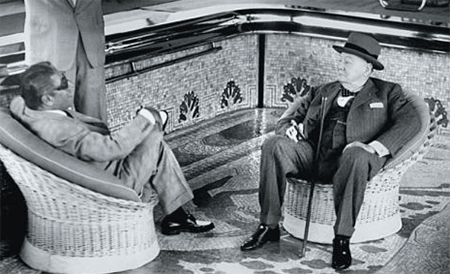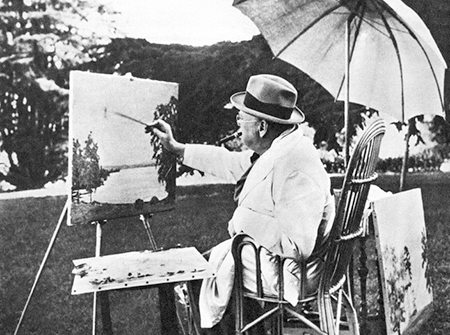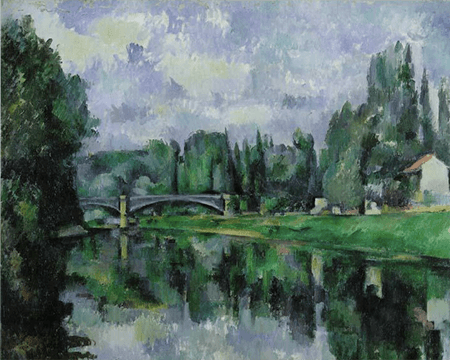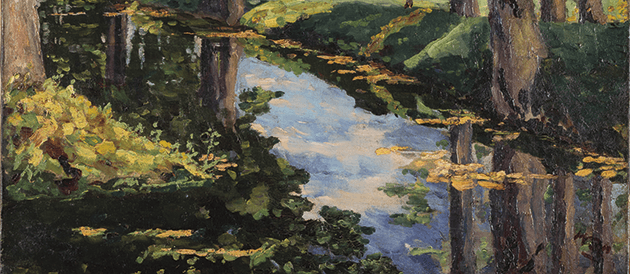20th Century & Contemporary Art Evening Sale
New York Auction 23 June 2021
1
Cinga Samson
Two piece 1
Estimate $25,000 - 35,000
Sold for $378,000
Create your first list.
Select an existing list or create a new list to share and manage lots you follow.
2
Jadé Fadojutimi
Untitled
Estimate $40,000 - 60,000
Sold for $390,600
Create your first list.
Select an existing list or create a new list to share and manage lots you follow.
3
Salman Toor
Fort Greene
Estimate $100,000 - 150,000
Sold for $478,800
Create your first list.
Select an existing list or create a new list to share and manage lots you follow.
4
Avery Singer
Untitled
Estimate $1,200,000 - 1,800,000
Sold for $4,144,000
Create your first list.
Select an existing list or create a new list to share and manage lots you follow.
5
Matthew Wong
The Reader
Estimate $600,000 - 800,000
Sold for $2,329,000
Create your first list.
Select an existing list or create a new list to share and manage lots you follow.
6
Winston Churchill
The Moat, Breccles
Estimate $1,500,000 - 2,000,000
Sold for $1,845,000
Create your first list.
Select an existing list or create a new list to share and manage lots you follow.
7
Matthew Wong
Field in a Dream
Estimate $1,500,000 - 2,000,000
Sold for $2,934,000
Create your first list.
Select an existing list or create a new list to share and manage lots you follow.
8
Jean Dubuffet
L'homme à la toque
Estimate $2,000,000 - 3,000,000
Sold for $2,571,000
Create your first list.
Select an existing list or create a new list to share and manage lots you follow.
9
Emily Mae Smith
Waiting Room
Estimate $40,000 - 60,000
Sold for $756,000
Create your first list.
Select an existing list or create a new list to share and manage lots you follow.
10
Nicole Eisenman
Whatever Guy
Estimate $600,000 - 800,000
Sold for $840,700
Create your first list.
Select an existing list or create a new list to share and manage lots you follow.
11
Norman Lewis
Abstract City
Estimate $800,000 - 1,200,000
Sold for $1,119,000
Create your first list.
Select an existing list or create a new list to share and manage lots you follow.
12
Jean-Michel Basquiat and Andy Warhol
Bananas
Estimate $4,000,000 - 6,000,000
Sold for $4,300,000
Create your first list.
Select an existing list or create a new list to share and manage lots you follow.
13
David Hockney
A Neat Lawn
Estimate $9,500,000 - 10,500,000
Sold for $11,000,000
Create your first list.
Select an existing list or create a new list to share and manage lots you follow.
14
Vija Celmins
Untitled (Ocean)
Estimate $5,500,000 - 6,500,000
Sold for $7,748,000
Create your first list.
Select an existing list or create a new list to share and manage lots you follow.
15
Carmen Herrera
Green and Orange
Estimate $2,000,000 - 3,000,000
Sold for $2,200,000
Create your first list.
Select an existing list or create a new list to share and manage lots you follow.
16
This lot is no longer available.
17
Brice Marden
Elements III
Estimate $3,200,000 - 3,800,000
Sold for $5,233,000
Create your first list.
Select an existing list or create a new list to share and manage lots you follow.
18
Amoako Boafo
Untitled
Estimate $80,000 - 120,000
Sold for $655,200
Create your first list.
Select an existing list or create a new list to share and manage lots you follow.
19
Titus Kaphar
Untitled III
Estimate $300,000 - 400,000
Sold for $1,058,500
Create your first list.
Select an existing list or create a new list to share and manage lots you follow.
20
Amy Sherald
It Made Sense...Mostly In Her Mind
Estimate $500,000 - 700,000
Sold for $3,539,000
Create your first list.
Select an existing list or create a new list to share and manage lots you follow.
21
Wayne Thiebaud
Winding River
Estimate $6,000,000 - 8,000,000
Sold for $9,809,000
Create your first list.
Select an existing list or create a new list to share and manage lots you follow.
22
Mark Rothko
Untitled
Estimate $3,500,000 - 4,500,000
Sold for $3,700,000
Create your first list.
Select an existing list or create a new list to share and manage lots you follow.
23
Jean-Michel Basquiat
Batman
Estimate $1,600,000 - 2,000,000
Sold for $1,800,000
Create your first list.
Select an existing list or create a new list to share and manage lots you follow.
24
Keith Haring
Untitled (For John Sex)
Estimate $800,000 - 1,200,000
Sold for $899,000
Create your first list.
Select an existing list or create a new list to share and manage lots you follow.
25
Takashi Murakami
Red Demon and Blue Demon with 48 Arhats
Estimate $3,500,000 - 4,500,000
Sold for $6,080,000
Create your first list.
Select an existing list or create a new list to share and manage lots you follow.
26
Gerhard Richter
Abstraktes Bild (940-2)
Estimate $4,500,000 - 5,500,000
Sold for $5,112,000
Create your first list.
Select an existing list or create a new list to share and manage lots you follow.
27
Joan Mitchell
Untitled
Estimate $2,500,000 - 3,500,000
Sold for $3,902,000
Create your first list.
Select an existing list or create a new list to share and manage lots you follow.
28
Willem de Kooning
East Hampton V
Estimate $700,000 - 1,000,000
Sold for $3,055,000
Create your first list.
Select an existing list or create a new list to share and manage lots you follow.
29
Amy Sillman
Flower Giver
Estimate $300,000 - 400,000
Sold for $598,500
Create your first list.
Select an existing list or create a new list to share and manage lots you follow.
30
Alexander Calder
Fourteen Black Leaves
Estimate $2,000,000 - 3,000,000
Sold for $2,300,000
Create your first list.
Select an existing list or create a new list to share and manage lots you follow.
31
This lot is no longer available.
32
Julie Curtiss
Three Widows
Estimate $110,000 - 150,000
Sold for $466,200
Create your first list.
Select an existing list or create a new list to share and manage lots you follow.
33
Norman Rockwell
My Mother (Soldier with French Woman)
Estimate $350,000 - 500,000
Sold for $504,000
Create your first list.
Select an existing list or create a new list to share and manage lots you follow.
34
Richard Prince
Nurses Dormitory #3
Estimate $800,000 - 1,200,000
Sold for $1,482,000
Create your first list.
Select an existing list or create a new list to share and manage lots you follow.
35
Mickalene Thomas
Portrait of Jessica
Estimate $200,000 - 300,000
Sold for $1,542,500
Create your first list.
Select an existing list or create a new list to share and manage lots you follow.
36
Andy Warhol
Mao
Estimate $3,500,000 - 4,500,000
Sold for $3,000,000
Create your first list.
Select an existing list or create a new list to share and manage lots you follow.
37
Georg Baselitz
Drei Herzen (Three Hearts)
Estimate $2,500,000 - 3,500,000
Sold for $2,450,000
Create your first list.
Select an existing list or create a new list to share and manage lots you follow.
38
Carl Andre
36 Copper Square
Estimate $2,500,000 - 3,500,000
Sold for $2,692,000
Create your first list.
Select an existing list or create a new list to share and manage lots you follow.
39
Robert Rauschenberg
Untitled (Elemental Sculpture)
Estimate $250,000 - 350,000
Sold for $315,000
Create your first list.
Select an existing list or create a new list to share and manage lots you follow.
40
Bruce Nauman
Musical Chair
Estimate $1,000,000 - 1,500,000
Sold for $1,482,000
Create your first list.
Select an existing list or create a new list to share and manage lots you follow.
41
David Hammons
It’s Not Necessary
Estimate $800,000 - 1,200,000
Sold for $5,475,000
Create your first list.
Select an existing list or create a new list to share and manage lots you follow.
42
Andy Warhol
Shadow (Double)
Estimate $800,000 - 1,200,000
Sold for $877,000
Create your first list.
Select an existing list or create a new list to share and manage lots you follow.
43
Toyin Ojih Odutola
Quality Control
Estimate $150,000 - 200,000
Sold for $340,200
Create your first list.
Select an existing list or create a new list to share and manage lots you follow.
44
Robert Colescott
Gift of the Sea
Estimate $300,000 - 500,000
Sold for $504,000
Create your first list.
Select an existing list or create a new list to share and manage lots you follow.
45
Dana Schutz
Swiss Family Traveling
Estimate $1,200,000 - 1,800,000
Sold for $1,482,000
Create your first list.
Select an existing list or create a new list to share and manage lots you follow.
46
Banksy
Love Is In The Air
Estimate $1,000,000 - 2,000,000
Sold for $1,179,500
Create your first list.
Select an existing list or create a new list to share and manage lots you follow.
47
Keith Haring
Untitled
Estimate $1,000,000 - 1,500,000
Sold for $1,482,000
Create your first list.
Select an existing list or create a new list to share and manage lots you follow.
48
Louise Bourgeois
Labyrinthine Tower
Estimate $550,000 - 750,000
Sold for $756,000
Create your first list.
Select an existing list or create a new list to share and manage lots you follow.
49
Paul McCarthy
White Snow Dwarf (Doc)
Estimate $400,000 - 600,000
Sold for $403,200
Create your first list.
Select an existing list or create a new list to share and manage lots you follow.
50No Reserve
Jeff Koons
Gazing Ball (Demeter)
Estimate $400,000 - 600,000 •
Sold for $998,000
Create your first list.
Select an existing list or create a new list to share and manage lots you follow.

![[left] Winston Churchill and Aristotle Onassis arriving on the Christina. Image: Bettmann / Getty Images](https://phillips.vo.llnwd.net/v1/web_dev/lot-component/GettyImages-515455692_3b707bb6-b83d-493f-a105-848c55fd2b1a.png)


